The EU Gender Pay Gap
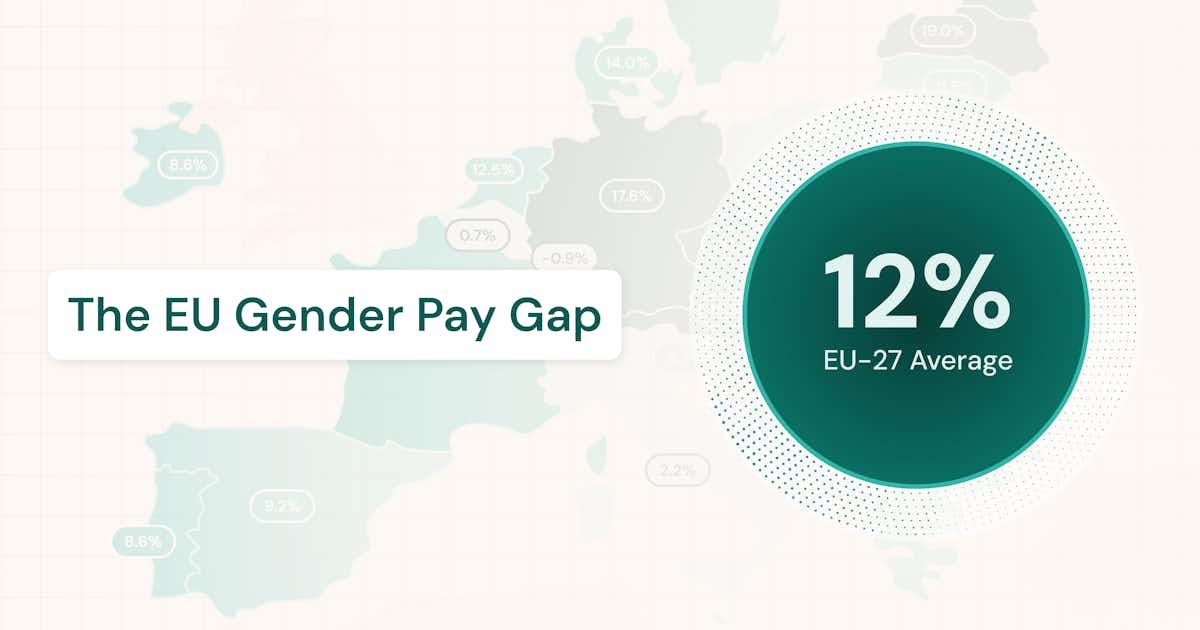
Learn more about the following beqom products
On EU Equal Pay Day, we mark the date that women across the European Union effectively stop earning compared to their male counterparts. This annual reminder is a powerful signal: while the EU Pay Transparency Directive mandates change, the fight for true pay equity is far from over.
The latest figures paint a complex picture of disparity across the continent. With the EU-27 average gender pay gap standing at 12%, the situation demands immediate, strategic attention from governments and HR leaders alike.
But there are reasons to be hopeful. The EU Pay Transparency Directive transforms equal pay for equal work from a voluntary CSR initiative into a mandatory requirement for companies operating across the European Union. Organizations must successfully navigate this shift in order to avoid significant legal and reputational risk, and to foster the employee trust required to attract and retain top talent.
At beqom, we’re building a fairer future for every employee by delivering powerful tools that foster fairer pay. Our vision is to empower organizations to build a future where people-first pay solutions are the foundation for engagement, performance, and success.
To highlight how far the EU still has to go before fair pay is achieved across the region, we’ve created an infographic that visually breaks down the gender pay gap and current transposition status across all 27 member states. Scroll down to learn more!
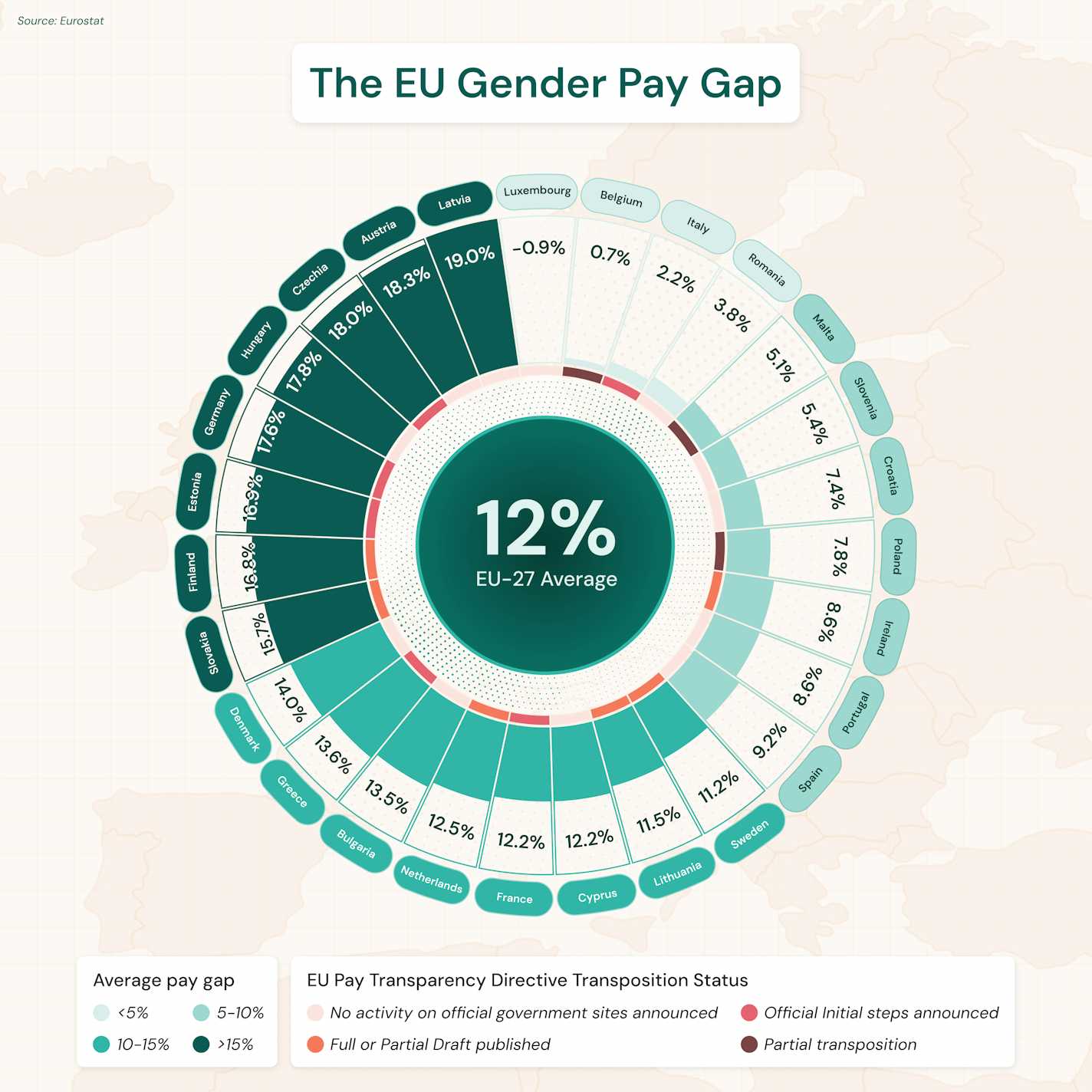
Source: Eurostat
Key takeaways
- High-risk majority: The Directive's trigger for mandatory pay assessments (unexplained gap of 5%) affects nearly all EU nations. Only 5 of the 27 member states currently fall below this critical threshold (Luxembourg, Belgium, Italy, Romania, and Malta), meaning the vast majority of pan-European operations are exposed to the risk of Joint Pay Assessments (JPAs).
- The eastern gap & regulatory lag: The highest disparities are concentrated in Eastern and Baltic member states, with Latvia (19%), Czechia (18%), and Hungary (17.8%) all significantly exceeding the 12% EU average. These high-gap countries are frequently lagging in transposition efforts ("No activity"), creating the most unpredictable legal environments for employers.
- Giants and frontrunners: While major economies like Germany (17.6%) and France (12.2%) are moving slowly, having only taken initial steps, early movers like Ireland (8.6%), Poland (7.8%), and Sweden (11.2%) are already publishing drafts. These nations provide an interesting preview of how new requirements, such as mandatory salary range disclosure and standardized reporting, impact the pay gap.
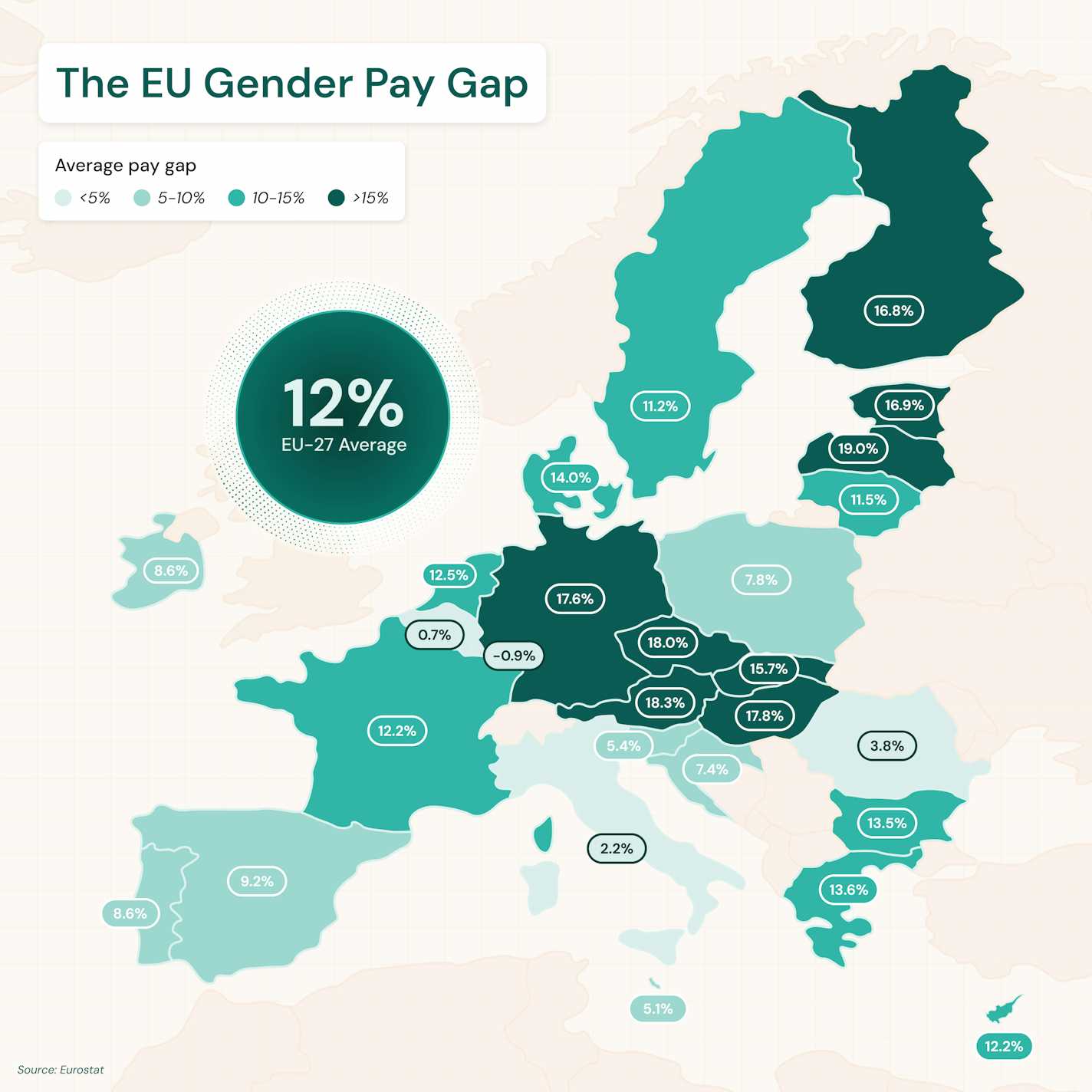
Source: Eurostat
The time to close pay gaps is now
The time to audit, model, and remediate your organization's pay practices is now, before non-compliance leads to penalties, litigation, or reputational damage.
The EU Pay Transparency Directive is a powerful catalyst for change. Use beqom's powerful pay equity and transparency tool to close pay gaps, mitigate compliance risk, foster employee trust, and attract top talent.
- Audit defensibly: Run sophisticated, automated pay equity analyses to isolate the unexplained gaps.
- Plan proactively: Model budget impacts and remediate gaps using objective, gender-neutral criteria before national deadlines hit.
- Ensure global consistency: From Luxembourg to Latvia, manage transparency and reporting requirements across the diverse set of EU member states.
Ready to close pay gaps at your organization? Book a meeting with one of our experts today.
More relevant resources about pay equity in Europe
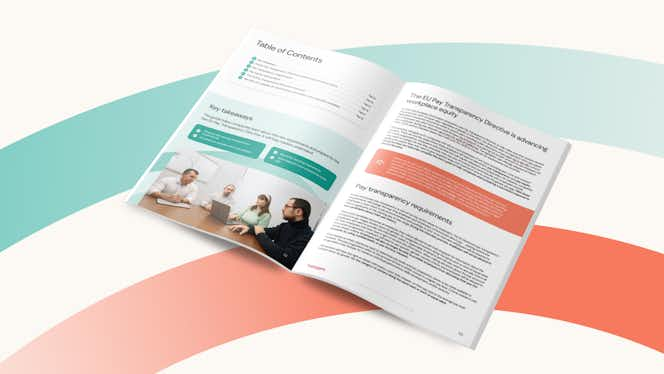
Download our Guide to the EU Pay Transparency Directive

Watch Our On-Demand Workshop to Kickstart your Pay Equity & Transparency Journey
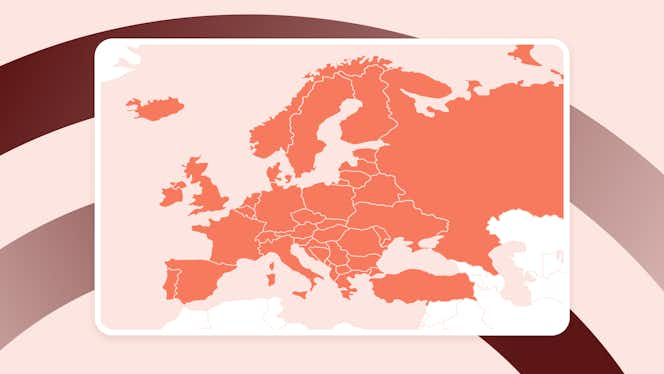
Track Transposition Status of the EU Directive by Country
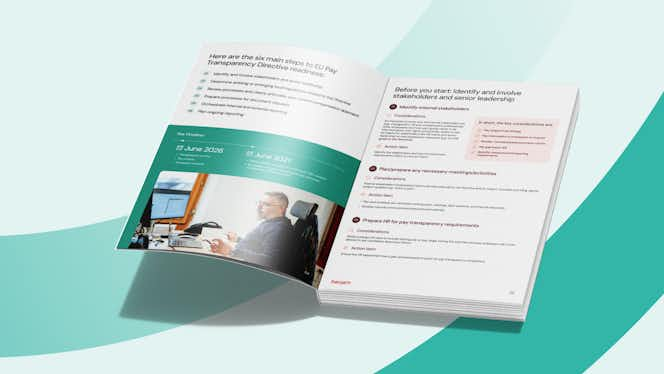
Download our Checklist for the EU Pay Transparency Directive







